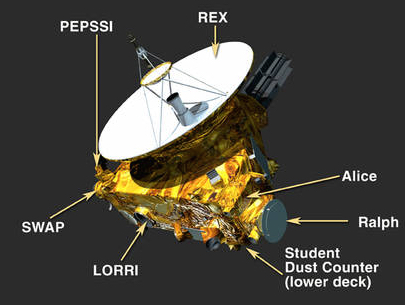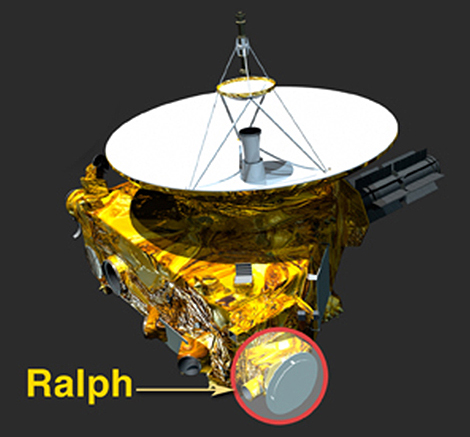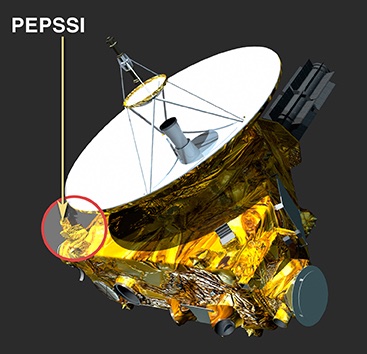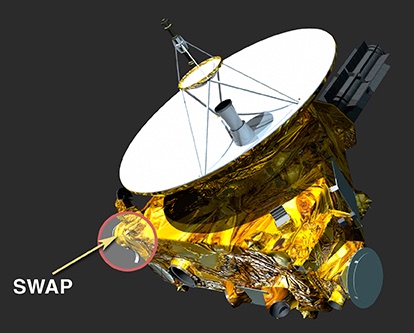[fullwidth backgroundcolor=”” backgroundimage=”” backgroundrepeat=”no-repeat” backgroundposition=”left top” backgroundattachment=”scroll” video_webm=”” video_mp4=”” video_ogv=”” video_preview_image=”” overlay_color=”” overlay_opacity=”0.5″ video_mute=”yes” video_loop=”yes” fade=”no” bordersize=”0px” bordercolor=”” borderstyle=”solid” paddingtop=”0px” paddingbottom=”0px” paddingleft=”0px” paddingright=”0px” menu_anchor=”” equal_height_columns=”no” hundred_percent=”no” class=”” id=””]
[title size=”1″ content_align=”left” style_type=”single” sep_color=”” class=”” id=””]How We Got To Pluto
[/title][/fullwidth][fullwidth backgroundcolor=”” backgroundimage=”” backgroundrepeat=”no-repeat” backgroundposition=”left top” backgroundattachment=”scroll” video_webm=”” video_mp4=”” video_ogv=”” video_preview_image=”” overlay_color=”” overlay_opacity=”0.5″ video_mute=”yes” video_loop=”yes” fade=”no” bordersize=”0px” bordercolor=”” borderstyle=”solid” paddingtop=”0px” paddingbottom=”0px” paddingleft=”0px” paddingright=”0px” menu_anchor=”” equal_height_columns=”no” hundred_percent=”no” class=”” id=””][one_fifth last=”no” spacing=”yes” background_color=”” background_image=”” background_repeat=”no-repeat” background_position=”left top” border_size=”0px” border_color=”” border_style=”” padding=”” class=”” id=””][fusion_text] [/fusion_text][/one_fifth][four_fifth last=”yes” spacing=”yes” background_color=”” background_image=”” background_repeat=”no-repeat” background_position=”left top” border_size=”0px” border_color=”” border_style=”” padding=”” class=”” id=””][fusion_text]Launched in 2006, NASA’s New Horizons space probe made its historic fly-by of the dwarf planet Pluto on July 14th. For regularly updated information about Pluto and its moons, check out http://scioworks.org/pluto. There you’ll find a companion blog to this recording with links and details. For an update about the science coming in from New Horizons, check out SciWorks Radio on July 26th, to be archived at wfdd.org.
[/fusion_text][/one_fifth][four_fifth last=”yes” spacing=”yes” background_color=”” background_image=”” background_repeat=”no-repeat” background_position=”left top” border_size=”0px” border_color=”” border_style=”” padding=”” class=”” id=””][fusion_text]Launched in 2006, NASA’s New Horizons space probe made its historic fly-by of the dwarf planet Pluto on July 14th. For regularly updated information about Pluto and its moons, check out http://scioworks.org/pluto. There you’ll find a companion blog to this recording with links and details. For an update about the science coming in from New Horizons, check out SciWorks Radio on July 26th, to be archived at wfdd.org.
I wanted to get some background information to SciWorks Radio listeners and to do that, I spoke with Jonathan Ward, volunteer NASA JPL Solar System Ambassador, and author of two brand new books about the Apollo missions.
[/fusion_text][/four_fifth][/fullwidth][fullwidth backgroundcolor=”” backgroundimage=”” backgroundrepeat=”no-repeat” backgroundposition=”left top” backgroundattachment=”scroll” video_webm=”” video_mp4=”” video_ogv=”” video_preview_image=”” overlay_color=”” overlay_opacity=”0.5″ video_mute=”yes” video_loop=”yes” fade=”no” bordersize=”0px” bordercolor=”” borderstyle=”solid” paddingtop=”0px” paddingbottom=”0px” paddingleft=”0px” paddingright=”0px” menu_anchor=”” equal_height_columns=”no” hundred_percent=”no” class=”” id=””][fusion_text]
New Horizons is a space probe that was first proposed about 22 to 23 years ago. Pluto being the last major body in the solar system that hadn’t been explored yet and there was talk about some sort of way to get a probe out there in a reasonable amount of time at a reasonable cost to be able to see what the Pluto system looks like. There was a bit of a hurry to get it out there because we were starting to realize that Pluto has a dynamic atmosphere that actually starts to freeze away and condense onto its surface as it moves farther away from the sun, so the thought was if we didn’t get a probe to Pluto before it started moving farther away from the sun in its orbit that we might miss the opportunity to study its atmosphere. So that’s why there was a bit of a hurry to get the mission off when they did
[/fusion_text][/fullwidth][fullwidth backgroundcolor=”” backgroundimage=”” backgroundrepeat=”no-repeat” backgroundposition=”left top” backgroundattachment=”scroll” video_webm=”” video_mp4=”” video_ogv=”” video_preview_image=”” overlay_color=”” overlay_opacity=”0.5″ video_mute=”yes” video_loop=”yes” fade=”no” bordersize=”0px” bordercolor=”” borderstyle=”” paddingtop=”20px” paddingbottom=”20px” paddingleft=”0px” paddingright=”0px” menu_anchor=”” equal_height_columns=”no” hundred_percent=”no” class=”” id=””][four_fifth last=”no” spacing=”yes” background_color=”” background_image=”” background_repeat=”no-repeat” background_position=”left top” border_size=”0px” border_color=”” border_style=”” padding=”” class=”” id=””][fusion_text]Pluto is 3 billion miles from Earth and we needed to get there fast, so NASA made the fastest probe ever launched. How’d they do that?[/fusion_text][fusion_text]
Number 1, we made a smaller probe than usual. Some of the other ones like Cassini are just absolutely huge and very heavy because they have a lot of maneuvering fuel and they actually had to have a lot of extra fuel to put them into orbit around Saturn. New Horizons is small. It’s about the size of a baby grand piano. And it is powered by a radioisotopic thermal generator; a plutonium power supply that provides heat which is turned into electricity. There is very little maneuvering fuel on there, and that’s mostly used to help for orienting the spacecraft.
[/fusion_text][/four_fifth][one_fifth last=”yes” spacing=”yes” background_color=”” background_image=”” background_repeat=”no-repeat” background_position=”left top” border_size=”0px” border_color=”” border_style=”” padding=”” class=”” id=””][fusion_text] [/fusion_text][/one_fifth][/fullwidth][fullwidth backgroundcolor=”” backgroundimage=”” backgroundrepeat=”no-repeat” backgroundposition=”left top” backgroundattachment=”scroll” video_webm=”” video_mp4=”” video_ogv=”” video_preview_image=”” overlay_color=”” overlay_opacity=”0.5″ video_mute=”yes” video_loop=”yes” fade=”no” bordersize=”0px” bordercolor=”” borderstyle=”” paddingtop=”20px” paddingbottom=”20px” paddingleft=”0px” paddingright=”0px” menu_anchor=”” equal_height_columns=”no” hundred_percent=”no” class=”” id=””][fusion_text]In fact, New Horizons has no propulsion system. At all. It was released into space at about 36,000 mph. It reached the moon’s distance in one day. For comparison, the Apollo astronauts took 3 days to get to the moon. It traveled so fast that it reached Jupiter in an unprecedented one year. It then got a gravitational sling-shot boost from Jupiter which added an additional 9,000 mph. New Horizons was also built for efficiency and survival.[/fusion_text][fusion_text]
[/fusion_text][/one_fifth][/fullwidth][fullwidth backgroundcolor=”” backgroundimage=”” backgroundrepeat=”no-repeat” backgroundposition=”left top” backgroundattachment=”scroll” video_webm=”” video_mp4=”” video_ogv=”” video_preview_image=”” overlay_color=”” overlay_opacity=”0.5″ video_mute=”yes” video_loop=”yes” fade=”no” bordersize=”0px” bordercolor=”” borderstyle=”” paddingtop=”20px” paddingbottom=”20px” paddingleft=”0px” paddingright=”0px” menu_anchor=”” equal_height_columns=”no” hundred_percent=”no” class=”” id=””][fusion_text]In fact, New Horizons has no propulsion system. At all. It was released into space at about 36,000 mph. It reached the moon’s distance in one day. For comparison, the Apollo astronauts took 3 days to get to the moon. It traveled so fast that it reached Jupiter in an unprecedented one year. It then got a gravitational sling-shot boost from Jupiter which added an additional 9,000 mph. New Horizons was also built for efficiency and survival.[/fusion_text][fusion_text]
There are very few moving parts on the spacecraft, again because, number one, the long duration of the mission, things tend to break down if you’re using them a lot in cold environments. It’s also extremely cold, getting close to absolute zero as you get out towards the Pluto distance from the earth and from the sun. So, most of these instruments are fixed in place. Even the cameras, there was no swinging platform like there had been on other missions, that can move the cameras around. They would just take pictures by moving the spacecraft around instead of moving the cameras themselves.
[/fusion_text][/fullwidth][fullwidth backgroundcolor=”” backgroundimage=”” backgroundrepeat=”no-repeat” backgroundposition=”left top” backgroundattachment=”scroll” video_webm=”” video_mp4=”” video_ogv=”” video_preview_image=”” overlay_color=”” overlay_opacity=”0.5″ video_mute=”yes” video_loop=”yes” fade=”no” bordersize=”0px” bordercolor=”” borderstyle=”solid” paddingtop=”0px” paddingbottom=”0px” paddingleft=”0px” paddingright=”0px” menu_anchor=”” equal_height_columns=”no” hundred_percent=”no” class=”” id=””][/fullwidth][fullwidth backgroundcolor=”” backgroundimage=”” backgroundrepeat=”no-repeat” backgroundposition=”left top” backgroundattachment=”scroll” video_webm=”” video_mp4=”” video_ogv=”” video_preview_image=”” overlay_color=”” overlay_opacity=”0.5″ video_mute=”yes” video_loop=”yes” fade=”no” bordersize=”0px” bordercolor=”” borderstyle=”solid” paddingtop=”0px” paddingbottom=”0px” paddingleft=”0px” paddingright=”0px” menu_anchor=”” equal_height_columns=”no” hundred_percent=”no” class=”” id=””][four_fifth last=”no” spacing=”yes” background_color=”” background_image=”” background_repeat=”no-repeat” background_position=”left top” border_size=”0px” border_color=”” border_style=”” padding=”” class=”” id=””][fusion_text]New Horizons is stocked with an array of science instruments.[/fusion_text][fusion_text]
They are very very low power instruments as well. This is one of the most energy efficientspacecrafts out there. All of the instruments together draw less than 28 watts, so that’s about the same as a nightlight. The main ones that people are going to be most interested in, I think we’re a visual species. We like to see pictures. That’s true for the Mars rovers as well as any other types of missions.
(Click here for some great additional information on New Horizons’ instruments)
[/fusion_text][/four_fifth][one_fifth last=”yes” spacing=”yes” background_color=”” background_image=”” background_repeat=”no-repeat” background_position=”left top” border_size=”0px” border_color=”” border_style=”” padding=”” class=”” id=””][fusion_text] [/fusion_text][/one_fifth][/fullwidth][fullwidth backgroundcolor=”” backgroundimage=”” backgroundrepeat=”no-repeat” backgroundposition=”left top” backgroundattachment=”scroll” video_webm=”” video_mp4=”” video_ogv=”” video_preview_image=”” overlay_color=”” overlay_opacity=”0.5″ video_mute=”yes” video_loop=”yes” fade=”no” bordersize=”0px” bordercolor=”” borderstyle=”” paddingtop=”20px” paddingbottom=”20px” paddingleft=”0px” paddingright=”0px” menu_anchor=”” equal_height_columns=”no” hundred_percent=”no” class=”” id=””][one_fifth last=”no” spacing=”yes” background_color=”” background_image=”” background_repeat=”no-repeat” background_position=”left top” border_size=”0px” border_color=”” border_style=”” padding=”” class=”” id=””][fusion_text]
[/fusion_text][/one_fifth][/fullwidth][fullwidth backgroundcolor=”” backgroundimage=”” backgroundrepeat=”no-repeat” backgroundposition=”left top” backgroundattachment=”scroll” video_webm=”” video_mp4=”” video_ogv=”” video_preview_image=”” overlay_color=”” overlay_opacity=”0.5″ video_mute=”yes” video_loop=”yes” fade=”no” bordersize=”0px” bordercolor=”” borderstyle=”” paddingtop=”20px” paddingbottom=”20px” paddingleft=”0px” paddingright=”0px” menu_anchor=”” equal_height_columns=”no” hundred_percent=”no” class=”” id=””][one_fifth last=”no” spacing=”yes” background_color=”” background_image=”” background_repeat=”no-repeat” background_position=”left top” border_size=”0px” border_color=”” border_style=”” padding=”” class=”” id=””][fusion_text] [/fusion_text][/one_fifth][four_fifth last=”yes” spacing=”yes” background_color=”” background_image=”” background_repeat=”no-repeat” background_position=”left top” border_size=”0px” border_color=”” border_style=”” padding=”” class=”” id=””][fusion_text]
[/fusion_text][/one_fifth][four_fifth last=”yes” spacing=”yes” background_color=”” background_image=”” background_repeat=”no-repeat” background_position=”left top” border_size=”0px” border_color=”” border_style=”” padding=”” class=”” id=””][fusion_text]
The two ones that we’ll primarily be seeing pictures from are RALPH, which is a regular type of camera in terms of not being telephoto, but it also can take pictures in various wavelengths of light so that it can detect chemical compositions in the atmosphere, and also on the surface of Pluto. RALPH is the primary camera.
[/fusion_text][/four_fifth][/fullwidth][fullwidth backgroundcolor=”” backgroundimage=”” backgroundrepeat=”no-repeat” backgroundposition=”left top” backgroundattachment=”scroll” video_webm=”” video_mp4=”” video_ogv=”” video_preview_image=”” overlay_color=”” overlay_opacity=”0.5″ video_mute=”yes” video_loop=”yes” fade=”no” bordersize=”0px” bordercolor=”” borderstyle=”” paddingtop=”20px” paddingbottom=”20px” paddingleft=”0px” paddingright=”0px” menu_anchor=”” equal_height_columns=”no” hundred_percent=”no” class=”” id=””][one_fifth last=”no” spacing=”yes” background_color=”” background_image=”” background_repeat=”no-repeat” background_position=”left top” border_size=”0px” border_color=”” border_style=”” padding=”” class=”” id=””][fusion_text] [/fusion_text][/one_fifth][four_fifth last=”yes” spacing=”yes” background_color=”” background_image=”” background_repeat=”no-repeat” background_position=”left top” border_size=”0px” border_color=”” border_style=”” padding=”” class=”” id=””][fusion_text]
[/fusion_text][/one_fifth][four_fifth last=”yes” spacing=”yes” background_color=”” background_image=”” background_repeat=”no-repeat” background_position=”left top” border_size=”0px” border_color=”” border_style=”” padding=”” class=”” id=””][fusion_text]
The long range camera is called LORRI. And that’s an 8-inch telephoto lens that’s attached to New Horizons. And that’s going to give us our most detailed view of the satellite, Charon, as well as Pluto.
[/fusion_text][/four_fifth][/fullwidth][fullwidth backgroundcolor=”” backgroundimage=”” backgroundrepeat=”no-repeat” backgroundposition=”left top” backgroundattachment=”scroll” video_webm=”” video_mp4=”” video_ogv=”” video_preview_image=”” overlay_color=”” overlay_opacity=”0.5″ video_mute=”yes” video_loop=”yes” fade=”no” bordersize=”0px” bordercolor=”” borderstyle=”solid” paddingtop=”0px” paddingbottom=”0px” paddingleft=”0px” paddingright=”0px” menu_anchor=”” equal_height_columns=”no” hundred_percent=”no” class=”” id=””][one_fifth last=”no” spacing=”yes” background_color=”” background_image=”” background_repeat=”no-repeat” background_position=”left top” border_size=”0px” border_color=”” border_style=”” padding=”” class=”” id=””][fusion_text] [/fusion_text][/one_fifth][four_fifth last=”yes” spacing=”yes” background_color=”” background_image=”” background_repeat=”no-repeat” background_position=”left top” border_size=”0px” border_color=”” border_style=”” padding=”” class=”” id=””][fusion_text]
[/fusion_text][/one_fifth][four_fifth last=”yes” spacing=”yes” background_color=”” background_image=”” background_repeat=”no-repeat” background_position=”left top” border_size=”0px” border_color=”” border_style=”” padding=”” class=”” id=””][fusion_text]
Then there are a number of different instruments on there. There’s a student dust counter (SDC), which is an interesting thing. This is the first student-built experiment that’s ever been flown on an interplanetary probe before. It was built by students at the University of Colorado. It’s going to be looking for particles that resulted from the collision of asteroids or small bodies in the Pluto environment.
[/fusion_text][/four_fifth][/fullwidth][fullwidth backgroundcolor=”” backgroundimage=”” backgroundrepeat=”no-repeat” backgroundposition=”left top” backgroundattachment=”scroll” video_webm=”” video_mp4=”” video_ogv=”” video_preview_image=”” overlay_color=”” overlay_opacity=”0.5″ video_mute=”yes” video_loop=”yes” fade=”no” bordersize=”0px” bordercolor=”” borderstyle=”solid” paddingtop=”0px” paddingbottom=”0px” paddingleft=”0px” paddingright=”0px” menu_anchor=”” equal_height_columns=”no” hundred_percent=”no” class=”” id=””][one_fifth last=”no” spacing=”yes” background_color=”” background_image=”” background_repeat=”no-repeat” background_position=”left top” border_size=”0px” border_color=”” border_style=”” padding=”” class=”” id=””][fusion_text] [/fusion_text][/one_fifth][four_fifth last=”yes” spacing=”yes” background_color=”” background_image=”” background_repeat=”no-repeat” background_position=”left top” border_size=”0px” border_color=”” border_style=”” padding=”” class=”” id=””][fusion_text]
[/fusion_text][/one_fifth][four_fifth last=”yes” spacing=”yes” background_color=”” background_image=”” background_repeat=”no-repeat” background_position=”left top” border_size=”0px” border_color=”” border_style=”” padding=”” class=”” id=””][fusion_text]
REX is a radio device that actually is going to be looking for how a signal transmitted to Earth passes through Pluto’s atmosphere, or Charon’s atmosphere if there is one, to be able to characterize the thickness of that atmosphere. Normally, when they do what’s called an occultation experiment, where they see how the strength of that beam changes as it moves from being blocked by the planet to the signal not being blocked, or going through the atmosphere. Normally, it’s the spacecraft transmitting back to Earth that sends that signal. Because New Horizons is so far away and the transmitter is so weak, they’re actually doing it in reverse. They’re having the signal come from Earth and be measured by New Horizons as Earth moves out from behind Pluto as seen by the spacecraft.
[/fusion_text][/four_fifth][/fullwidth][fullwidth backgroundcolor=”” backgroundimage=”” backgroundrepeat=”no-repeat” backgroundposition=”left top” backgroundattachment=”scroll” video_webm=”” video_mp4=”” video_ogv=”” video_preview_image=”” overlay_color=”” overlay_opacity=”0.5″ video_mute=”yes” video_loop=”yes” fade=”no” bordersize=”0px” bordercolor=”” borderstyle=”solid” paddingtop=”0px” paddingbottom=”0px” paddingleft=”0px” paddingright=”0px” menu_anchor=”” equal_height_columns=”no” hundred_percent=”no” class=”” id=””][/fullwidth][fullwidth backgroundcolor=”” backgroundimage=”” backgroundrepeat=”no-repeat” backgroundposition=”left top” backgroundattachment=”scroll” video_webm=”” video_mp4=”” video_ogv=”” video_preview_image=”” overlay_color=”” overlay_opacity=”0.5″ video_mute=”yes” video_loop=”yes” fade=”no” bordersize=”0px” bordercolor=”” borderstyle=”solid” paddingtop=”0px” paddingbottom=”0px” paddingleft=”0px” paddingright=”0px” menu_anchor=”” equal_height_columns=”no” hundred_percent=”no” class=”” id=””][one_fifth last=”no” spacing=”yes” background_color=”” background_image=”” background_repeat=”no-repeat” background_position=”left top” border_size=”0px” border_color=”” border_style=”” padding=”” class=”” id=””][fusion_text] [/fusion_text][/one_fifth][four_fifth last=”yes” spacing=”yes” background_color=”” background_image=”” background_repeat=”no-repeat” background_position=”left top” border_size=”0px” border_color=”” border_style=”” padding=”” class=”” id=””][fusion_text]
[/fusion_text][/one_fifth][four_fifth last=”yes” spacing=”yes” background_color=”” background_image=”” background_repeat=”no-repeat” background_position=”left top” border_size=”0px” border_color=”” border_style=”” padding=”” class=”” id=””][fusion_text]
PEPSSI is the Pluto Energetic Spectrometer Science Investigation. It’s actually looking for particles that are escaping from Pluto’s atmosphere. One of the things that’s interesting about Pluto that we want to learn more about is that it’s gradually losing atmosphere out to the solar system because it has such a weak gravity that it loses on the order of tons of atmosphere a day. We think something like this might have happened on Mars. That Mars may have had a thicker atmosphere in the past, again not having a strong enough magnetosphere to keep it from being taken away by the solar wind, and also not having enough gravity to keep some of the lighter elements around. Mars eventually lost most of its atmosphere, so if we can characterize what’s going on at Pluto that would help us understand how planets like Mars lost their atmospheres over the course of the history of the solar system.
[/fusion_text][/four_fifth][/fullwidth][fullwidth backgroundcolor=”” backgroundimage=”” backgroundrepeat=”no-repeat” backgroundposition=”left top” backgroundattachment=”scroll” video_webm=”” video_mp4=”” video_ogv=”” video_preview_image=”” overlay_color=”” overlay_opacity=”0.5″ video_mute=”yes” video_loop=”yes” fade=”no” bordersize=”0px” bordercolor=”” borderstyle=”solid” paddingtop=”0px” paddingbottom=”0px” paddingleft=”0px” paddingright=”0px” menu_anchor=”” equal_height_columns=”no” hundred_percent=”no” class=”” id=””][/fullwidth][fullwidth backgroundcolor=”” backgroundimage=”” backgroundrepeat=”no-repeat” backgroundposition=”left top” backgroundattachment=”scroll” video_webm=”” video_mp4=”” video_ogv=”” video_preview_image=”” overlay_color=”” overlay_opacity=”0.5″ video_mute=”yes” video_loop=”yes” fade=”no” bordersize=”0px” bordercolor=”” borderstyle=”solid” paddingtop=”0px” paddingbottom=”0px” paddingleft=”0px” paddingright=”0px” menu_anchor=”” equal_height_columns=”no” hundred_percent=”no” class=”” id=””][one_fifth last=”no” spacing=”yes” background_color=”” background_image=”” background_repeat=”no-repeat” background_position=”left top” border_size=”0px” border_color=”” border_style=”” padding=”” class=”” id=””][fusion_text] [/fusion_text][/one_fifth][four_fifth last=”yes” spacing=”yes” background_color=”” background_image=”” background_repeat=”no-repeat” background_position=”left top” border_size=”0px” border_color=”” border_style=”” padding=”” class=”” id=””][fusion_text]
[/fusion_text][/one_fifth][four_fifth last=”yes” spacing=”yes” background_color=”” background_image=”” background_repeat=”no-repeat” background_position=”left top” border_size=”0px” border_color=”” border_style=”” padding=”” class=”” id=””][fusion_text]
There’s a solar wind at Pluto experiment called SWAP that is measuring the strength of the solar wind and how it interacts. Those are the major instruments that are on New Horizons. Again, it’s a very sophisticated set of instruments, with very low power, but they’re also very sophisticated for their time. The scientists were saying yesterday that as New Horizons passes Pluto and out into the Kuiper Belt, it will be traversing the same kind of area that Voyager I and Voyager II have been moving into, but with a much better set of science instruments than we had 40 years ago when Voyager I and Voyager II were launched.
[/fusion_text][/four_fifth][/fullwidth][fullwidth backgroundcolor=”” backgroundimage=”” backgroundrepeat=”no-repeat” backgroundposition=”left top” backgroundattachment=”scroll” video_webm=”” video_mp4=”” video_ogv=”” video_preview_image=”” overlay_color=”” overlay_opacity=”0.5″ video_mute=”yes” video_loop=”yes” fade=”no” bordersize=”0px” bordercolor=”” borderstyle=”solid” paddingtop=”0px” paddingbottom=”0px” paddingleft=”0px” paddingright=”0px” menu_anchor=”” equal_height_columns=”no” hundred_percent=”no” class=”” id=””][/fullwidth][fullwidth backgroundcolor=”” backgroundimage=”” backgroundrepeat=”no-repeat” backgroundposition=”left top” backgroundattachment=”scroll” video_webm=”” video_mp4=”” video_ogv=”” video_preview_image=”” overlay_color=”” overlay_opacity=”0.5″ video_mute=”yes” video_loop=”yes” fade=”no” bordersize=”0px” bordercolor=”” borderstyle=”solid” paddingtop=”0px” paddingbottom=”0px” paddingleft=”0px” paddingright=”0px” menu_anchor=”” equal_height_columns=”no” hundred_percent=”no” class=”” id=””][four_fifth last=”no” spacing=”yes” background_color=”” background_image=”” background_repeat=”no-repeat” background_position=”left top” border_size=”0px” border_color=”” border_style=”” padding=”” class=”” id=””][fusion_text]New Horizons is also carrying a very special payload. Mounted to the probe is a canister which reads “interned herein are the remains of American Clyde W Tombaugh, discoverer of Pluto and the solar system’s third zone.” Inside the canister is a small amount of ashes, remains of the man who discovered Pluto. Discovered in 1930, Pluto was considered our Solar System’s ninth planet until August of 2006, when it was reclassified as a dwarf planet, meaning that it is large enough to be spherical, but small enough that it doesn’t clear its orbit of debris. There are several known dwarf planets, and we will talk about them in a future episode of SciWorks Radio. Having launched in January of 2006, Pluto was only considered a planet during the first 7 months that the New Horizons probe was in flight. Regardless of classification, Pluto and its moon Charon are shaping up to be incredibly interesting.[/fusion_text][/four_fifth][one_fifth last=”yes” spacing=”yes” background_color=”” background_image=”” background_repeat=”no-repeat” background_position=”left top” border_size=”0px” border_color=”” border_style=”” padding=”” class=”” id=””][fusion_text] [/fusion_text][/one_fifth][/fullwidth][fullwidth backgroundcolor=”” backgroundimage=”” backgroundrepeat=”no-repeat” backgroundposition=”left top” backgroundattachment=”scroll” video_webm=”” video_mp4=”” video_ogv=”” video_preview_image=”” overlay_color=”” overlay_opacity=”0.5″ video_mute=”yes” video_loop=”yes” fade=”no” bordersize=”0px” bordercolor=”” borderstyle=”solid” paddingtop=”0px” paddingbottom=”0px” paddingleft=”0px” paddingright=”0px” menu_anchor=”” equal_height_columns=”no” hundred_percent=”no” class=”” id=””][fusion_text]
[/fusion_text][/one_fifth][/fullwidth][fullwidth backgroundcolor=”” backgroundimage=”” backgroundrepeat=”no-repeat” backgroundposition=”left top” backgroundattachment=”scroll” video_webm=”” video_mp4=”” video_ogv=”” video_preview_image=”” overlay_color=”” overlay_opacity=”0.5″ video_mute=”yes” video_loop=”yes” fade=”no” bordersize=”0px” bordercolor=”” borderstyle=”solid” paddingtop=”0px” paddingbottom=”0px” paddingleft=”0px” paddingright=”0px” menu_anchor=”” equal_height_columns=”no” hundred_percent=”no” class=”” id=””][fusion_text]
I think one of the things that most surprised me today with the press conference was how surprised they were about what’s going on there. By looking at the surface of Pluto, just in a couple of photographs and realizing how absolutely new the surface looks. It’s being resurfaced some how, either by methane snows coming down, or something like that. But they were unprepared for how few craters there were on Pluto or on the surface of Charon
[/fusion_text][/fullwidth][fullwidth backgroundcolor=”” backgroundimage=”” backgroundrepeat=”no-repeat” backgroundposition=”left top” backgroundattachment=”scroll” video_webm=”” video_mp4=”” video_ogv=”” video_preview_image=”” overlay_color=”” overlay_opacity=”0.5″ video_mute=”yes” video_loop=”yes” fade=”no” bordersize=”0px” bordercolor=”” borderstyle=”solid” paddingtop=”0px” paddingbottom=”0px” paddingleft=”0px” paddingright=”0px” menu_anchor=”” equal_height_columns=”no” hundred_percent=”no” class=”” id=””][fusion_text]But it will take a while to get all the data.[/fusion_text][fusion_text]
Transmission is a very low-powered transmitter too; I believe it’s just a couple of watts. But it’s also a very low transmission speed. When Pluto is just above the horizon as seen from the Deep Space Network, the probe transmits at about 1000 bits a second. When it gets higher up in the sky it’s about 4000 bits a second. So even slower than dial-up rate. You’ve got basically 2 gigabytes worth of data that are stored in the spacecraft hard drive. It’s actually a solid state drive. So that’s 2 gigabytes that has to be transmitted back at 4000 bits a second. It’s going to take a while for that data to come back to the Earth. There’s going to be a lot of interesting discoveries coming down over the next 16 months. I guess that’s one of the things that’s so exciting about this is we’ll continue to learn new things for 16 months even though the fly-by only lasted a brief period of time. That data’s going to take a while to come back to us and I think we’re going to get our ideas stood on their heads here as we go through the course of the next year and a half or so. To think that the entire solar system has been explored in my lifetime is just an amazing thing. I did a talk the other day about the Apollo program and I was just talking about how fortunate we are to live in an age of exploration like this. And I think there are opportunities like this, like with Apollo 8 when we first got the picture of the Earth rising over the edge of the moon, and seeing the whole earth at one time. It’s opportunities like this that cause us to reflect back on just who we are in relation to the rest of the universe. We get so centered on what’s going in our day-to-day lives in a very small area around us, or maybe our country, or even the continent we’re on, and we forget that there are all these worlds out there billions and billions of miles away and that we’re just a small speck of things going on in the rest of the universe, it kind of forces us to stand back and take measure of ourselves.
[/fusion_text][/fullwidth][fullwidth backgroundcolor=”” backgroundimage=”” backgroundrepeat=”no-repeat” backgroundposition=”left top” backgroundattachment=”scroll” video_webm=”” video_mp4=”” video_ogv=”” video_preview_image=”” overlay_color=”” overlay_opacity=”0.5″ video_mute=”yes” video_loop=”yes” fade=”no” bordersize=”0px” bordercolor=”” borderstyle=”solid” paddingtop=”0px” paddingbottom=”0px” paddingleft=”0px” paddingright=”0px” menu_anchor=”” equal_height_columns=”no” hundred_percent=”no” class=”” id=””]
This Time Round, the theme music for SciWorks Radio, appears as a generous contribution by the band Storyman and courtesy of UFOmusic.com.
[/fusion_text]


Recent Comments